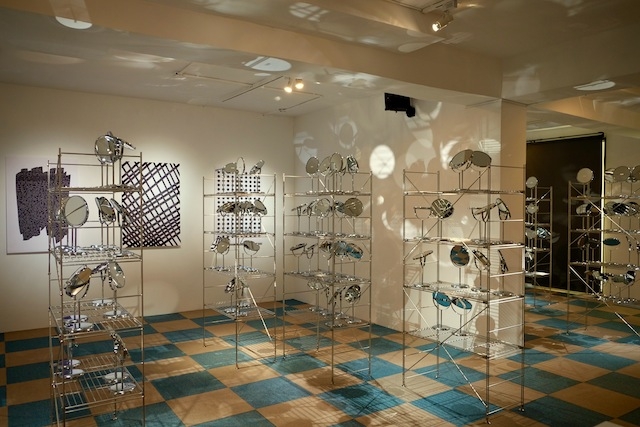Cube Project Space, Taipei 29 April – 2 July
You walk into a dimly lit room and hear a man’s voice from above your head: “I do everything in my power to enter someone’s mind, to become that person.” As the voiceover unfolds, you learn that the narrator, this ‘I’ who threatens to expropriate others’ identity (not in a threatening tone, though) and who’s clearly OK or even complacent about ‘his’ own parasitic state of existence as a song (composed by Teng Yu-hsien) called Rainy Night Flowers. First released by Columbia Records in Taiwan in 1934, the melancholic Taiwanese-language pop song, composed during Japan’s occupation, was revised by the Imperial Japanese Army to promote war. To date there are nine versions of lyrics, in Taiwanese, Japanese and Mandarin Chinese, pointing to very different sentiments and historical backgrounds. The song has been banned and revived so many times over the course of its history that it is associated with Taiwanese identity in a way no other cultural product can emulate – it is a symbol of Taiwanese solidarity, as well as a wound that marks the island’s painful history as the ‘Orphan of Asia’, manipulated, exploited and abused.
Rainy Night Flowers is a symbol of Taiwanese solidarity, as well as a wound that marks the island’s painful history as the ‘Orphan of Asia’, manipulated, exploited and abused
Here in the show, however, Teng Chao-Ming has composed a narrative that betrays the conventional understanding of the history of Rainy Night Flowers and, by extension, the interpretation of Taiwanese identity. Rather than lamenting the tragic experience, the voiceover tells a story of how ‘he’ decided at some point to reverse the situation by accepting his own vulnerability and to turn his lack of subjectivity into an advantage to survive the difficult times or prosper: “It never concerns me… whether I should be ‘me’… I just focus on looking for… the next occasion that I can sustain myself. I relish the moment when people scream my name, or flourish my avatars… turning my existence into a distributed system in the world.”
Unlike many artists who work with archives, Teng chooses to reverse the traditional hierarchy by positioning the song as a discursive subject (using a man’s voice can also be read as an indicator) rather than a mere object of research – there are no ‘authentic’ archives or documents in the show that support the ‘sincerity’ of the first-person, psychoanalytic narrative, and the absence of the familiar melody as well as all versions of lyrics only reinforces this change of mindset. In fact, each detail of the show seems to correspond to the concept of ‘reversal’, or at least an attempt to switch the point of view. For instance, the major part of the installation consists of over 100 mirrors placed on six steel shelves scattered across the space, each mirror with one name printed on it: that of each of the singers, writers and politicians from Taiwan, Japan or mainland China who once played a role in the song’s life story, including the artist himself. As you look into the mirror, you’ll see a certain name appear across your face, as if the mirror assigns you with an identity, rather than you recognising your own reflected subjectivity. Theoretically speaking, the mirror serves as a perfect metaphor for the act of identification, but as a visual expression, these mirrors seem a little too ‘eager’ to make a statement and thereby lose artistic subtlety. Moreover, the arrangement of these mirrors seems more random than organised, blocking any sense of the artist’s reading of the specific histories.
But still, the artist’s reconstruction of Rainy Night Flowers’ identity as a distributed, networked one offers an opportunity to rethink the representation of local politics. And the artist’s experiment with creating alternative understandings of the concept of identity reminds me of what David Joselit proposes in a manifesto at the end of his book Feedback: Television Against Democracy (2007) when analysing art and art history’s potential to function as political science: ‘LOSE YOUR IDENTITY… Use icons opportunistically, and share them with like-minded people. Make an avatar!’
First published in the Summer 2017 issue of ArtReview Asia
